A parking brake should be one of the most important features you look for when buying an adult tricycle, especially if you are an older rider or mobility-limited in any way.
Parking brakes are important for all kinds of vehicles, including cars, but for a tricycle , a parking brake is essentially a must-have feature. An adult tricycle always needs a reliable brake that will hold it in place, especially when it is parked, loaded, or mounted.
However, to use your parking brake efficiently and effectively, you must understand how it works, as well as when and how to engage or disengage it.
What is a Parking Brake?
A parking brake is a mechanism that locks one or both wheels in place to prevent a vehicle from rolling backward, especially when it is parked and not in motion.
The idea and purpose of a parking brake are the same for an adult tricycle as they are for a car: it keeps the vehicle stationary when parked, especially on uneven terrain or a slope.
How Does a Parking Brake Work in an Adult Tricycle?
Parking brakes do not work the same for all tricycles: most adult tricycles use a handlebar brake lever (just like bicycles), but others have a dedicated parking brake button, pin, or switch on the lever.
- The dedicated parking brake mechanism is usually a small lock pin, lever clip, or button that holds the brake lever in the "pulled" position.
- Also, the types of brakes differ on adult tricycles. Most modern adult tricycles use mechanical disc brakes or drum brakes.
The process of engaging or disengaging your parking brake will differ depending on whether your tricycle uses regular handlebar brakes or has a dedicated parking brake mechanism.
How to Engage the Parking Brake
Generally, there are two ways to engage the parking brake on an adult tricycle: squeezing the handbrake lever and engaging the locking mechanism.
Follow these steps:
- First, locate the parking brake mechanism. It may be a button or a lever, and it is typically located near the handlebars.
- Squeeze the hand brake lever (usually the left one)
- Engage the locking mechanism. This might be a button you press while squeezing the brake, or a pin or clip that clicks into place once the brake is engaged.
For most modern electric tricycles, such as the Viribus TG1 Electric Tricycle , you engage the parking brake by holding down the handbrake and pressing the parking buckle simultaneously. This will lock the brake down and keep it firm and stable.
To release it, press the brake again, and the buckle will automatically pop up. Release the brake lever, and you can ride normally.
How the Parking Brake on Disc Brakes Works
The parking brake mechanism operates slightly differently for vehicles equipped with disc brakes, and additional differences exist depending on whether the disc brake in question is mechanical or hydraulic.
For adult tricycles with disc brakes, the parking brake is typically a thumb lock, pin, or button integrated into the brake lever.
- When you squeeze the brake lever and engage the lock, the calipers stay clamped on the rotor, holding the wheel in place.
- The lever stays depressed, maintaining hydraulic or mechanical pressure in the system.
The TG1 Folding Electric Tricycle , for example, features front and rear disc brakes for precise, reliable stopping power in any condition. Its parking brake keeps the tricycle securely in place, even on inclines or uneven surfaces.
How the Parking Brake Works on Mechanical Disc Brakes
Mechanical Disc Brakes are cable-actuated, just like rim brakes, and they are very common in adult tricycles. Here’s how the parking brake works on mechanical disc brakes:
- Locking the lever compresses the caliper using cable tension.
- Parking brake levers work very similarly to rim-brake systems.
- Common on entry-level or mid-range adult tricycles.
Parking Brakes for Hydraulic Disc Brakes
Hydraulic disc brakes require a special hydraulic parking lock or a third-party clamp to maintain pressure. They are less common on trikes but are found on high-end or electric tricycles.
- You can’t simply “lock” the lever unless the system is designed with a dedicated parking feature.
Important Notes on Disc Brake Parking Brakes
- If your trike has hydraulic disc brakes, make sure it includes a built-in locking system, or you’ll need an aftermarket clamp (like the "BrakeFix" or Velcro wrap).
- Mechanical disc brakes are much easier to lock with standard parking brake levers.
- Holding a disc brake “on” too tightly for long periods may cause pad compression or rotor warping, so make sure it’s light but firm, not overly tight.
How The Parking Brake Works for Different Kinds of Brakes
| Brake Type | Parking Brake Compatibility | Notes |
| Rim Brakes | Very compatible (simple lock pin/button) | More common and easier to use |
| Drum Brakes | Compatible (similar to rim brakes) | Common on trikes |
| Mechanical Disc | Compatible (with standard lock lever) | Easy to retrofit or use |
| Hydraulic Disc | Not directly compatible without special parts | Needs a built-in lock or an aftermarket device |
How to Disengage or Release the Parking Brake
Disengaging a parking brake on disc brakes depends on the type of disc brake system (mechanical or hydraulic) and the kind of locking mechanism used on your vehicle. Here's a breakdown for both types
1. Disengaging the Parking Brake for Mechanical Disc Brakes (Cable-Actuated)
Most adult tricycles with disc brakes utilize mechanical disc brakes, which are the easiest to work with when it comes to engaging and disengaging the parking brake.
Follow these steps to disengage the parking brake
- Squeeze the brake lever again (the same one you used to engage the brake).
- This releases the lock pin, tab, or button that was holding the lever in the pulled position.
- The brake caliper releases the rotor, allowing the wheel to move freely again.
Note: This works similarly to rim brakes with a parking lock.
2. Disengaging the Parking Brake for Hydraulic Disc Brakes (Fluid-Actuated)
Hydraulic disc brakes typically do not include a built-in parking brake, unless the system is designed with a special parking valve or clamp. In most cases, riders use a parking brake clamp or strap to hold the lever in place.
If You Used a Clamp or Strap:
- Manually remove the clamp, rubber band, or Velcro strap holding the lever.
- The lever returns to its normal position, and the brake releases automatically.
- The fluid pressure in the hydraulic line drops, and the calipers stop pressing the rotor.
Note: Always consult your trike’s manual if it has a hydraulic parking feature. They're uncommon and vary by manufacturer.
Quick Recap
| Brake Type | Parking Brake Disengage Method |
| Mechanical Disc | Squeeze the brake lever to release the lock mechanism |
| Hydraulic Disc (strap) | Manually remove the clamp/strap from the lever |
| Hydraulic (built-in) | Press the release button or re-squeeze the lever |
Why a Parking Brake Is Especially Important for an Adult Tricycle
A parking brake is a convenient and helpful feature for any adult tricycle, especially an electric tricycle .
Just like traditional bikes have kickstands to keep them in place, tricycles need a reliable brake that holds them in place, especially when parked, loaded, or mounted.
Here are four reasons why a parking brake is an essential component of any adult tricycle:
- Trikes tend to be larger and heavier, making them more likely to build momentum when rolling.
- A trike won't tip over easily, but that doesn’t stop it from rolling downhill if parked on an incline. The stability of the three wheels does not prevent it from rolling downhill.
- Adult tricycles are capable of carrying heavy loads (groceries, pets, gear). Loading or unloading without a brake engaged could cause the trike to move unexpectedly.
- Many riders of adult tricycles are elderly. A parking brake helps ensure stability when getting on or off the seat.
Always check if a tricycle comes with a built-in parking brake or can be retrofitted with one, especially if safety and ease of use are top priorities for you.
A sturdy, reliable parking brake is one of the reasons why Viribus adult Tricycles are some of the best adult tricycles for adults out there.
Here is a breakdown of the best three adult tricycles you can afford from the Viribus collection.




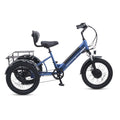
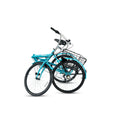
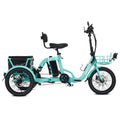

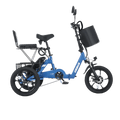







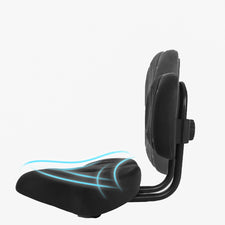





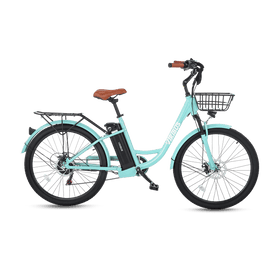
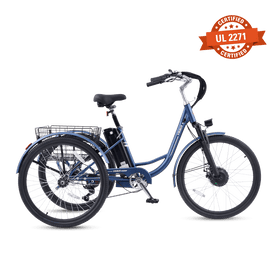
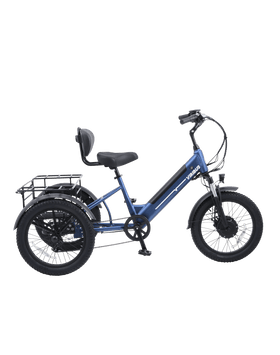



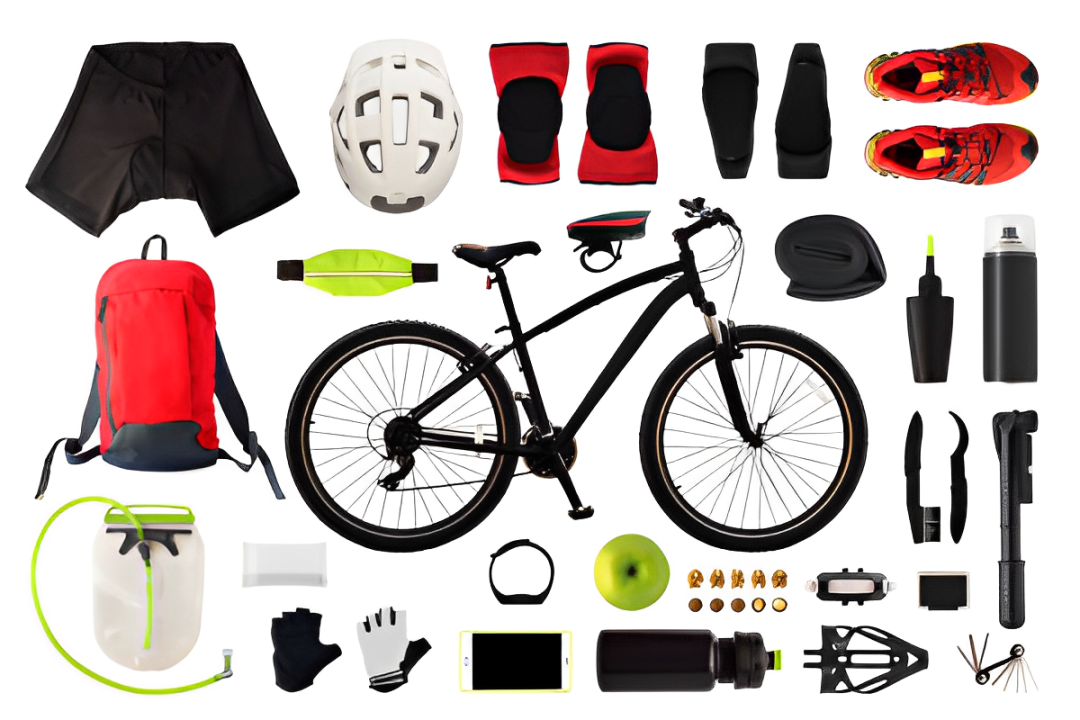

Leave a comment
All comments are moderated before being published.
This site is protected by hCaptcha and the hCaptcha Privacy Policy and Terms of Service apply.